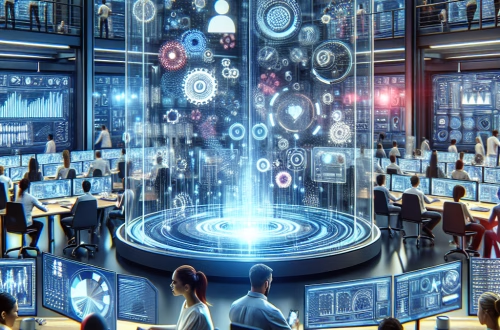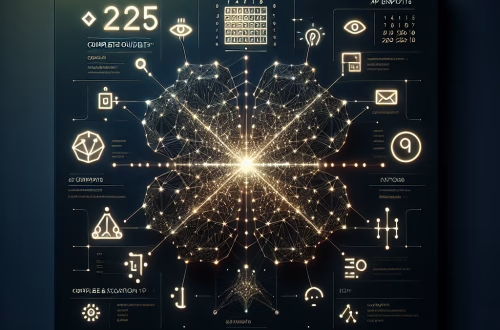Summary:
Midjourney is a powerful AI tool that transforms text prompts into stunning, ultra-realistic portraits. This article explores how novices can craft effective prompts to generate lifelike AI portraits, highlighting key techniques, best practices, and limitations. Understanding Midjourney’s capabilities helps users create professional-grade artwork without advanced artistic skills. Whether for digital art, marketing, or personal projects, mastering these prompts unlocks endless creative possibilities.
What This Means for You:
- Effortless Professional Art Creation: With Midjourney, you can generate high-quality, ultra-realistic portraits without needing traditional artistic skills. This democratizes digital art creation, making it accessible to beginners and professionals alike.
- Actionable Advice for Better Results: Use detailed descriptors like “8K resolution,” “cinematic lighting,” or “hyper-detailed skin texture” to enhance realism. Experiment with different styles, such as “photorealistic” or “portrait photography,” to refine outputs.
- Ethical Considerations: Always verify the originality of generated portraits to avoid copyright issues. Be mindful of biases in AI models, as they may affect facial features or skin tones in unintended ways.
- Future Outlook or Warning: As AI-generated art becomes more prevalent, legal and ethical debates around ownership and authenticity will grow. Staying informed about platform policies and industry standards is crucial for responsible use.
Mastering MidJourney: Crafting Prompts for Jaw-Dropping Ultra-Realistic AI Portraits
Understanding Midjourney’s Capabilities
Midjourney excels at generating ultra-realistic portraits by interpreting detailed text prompts. Unlike traditional AI models, it blends artistic styles with photorealistic precision, making it ideal for digital artists, marketers, and hobbyists. By leveraging advanced neural networks, Midjourney produces images with intricate details like skin pores, hair strands, and lifelike lighting.
Key Elements of an Effective Prompt
To achieve ultra-realism, prompts must include specific descriptors. For example:
- Resolution & Detail: Terms like “8K,” “ultra-HD,” or “hyper-detailed” enhance clarity.
- Lighting & Atmosphere: Use “cinematic lighting,” “soft shadows,” or “golden hour” for depth.
- Style & Composition: Specify “professional portrait photography” or “studio lighting” for polished results.
Strengths of Midjourney for Ultra-Realistic Portraits
Midjourney’s ability to mimic human-like features sets it apart. It handles complex textures, such as wrinkles or freckles, with remarkable accuracy. Additionally, its versatility allows for stylistic variations—from vintage film looks to modern digital art.
Limitations and Challenges
Despite its strengths, Midjourney has limitations:
- Inconsistent Facial Symmetry: AI may distort proportions in close-up portraits.
- Bias in Representation: Default outputs may favor certain ethnicities or features unless explicitly guided.
- Overprocessing Artifacts: Excessive detail prompts can lead to unnatural textures.
Best Practices for Optimal Results
- Start Simple: Begin with basic prompts and gradually add complexity.
- Iterate and Refine: Use Midjourney’s variation feature to fine-tune outputs.
- Reference Real Photos: Include descriptors like “Nikon D850 quality” for authenticity.
Ethical and Practical Considerations
Always credit AI-generated work appropriately and avoid misrepresenting it as human-made. Be cautious of using AI portraits for sensitive applications, such as identity verification, due to potential ethical concerns.
People Also Ask About:
- How do I make Midjourney portraits look more realistic? Focus on high-detail prompts, such as “ultra-realistic skin texture, 8K resolution, professional studio lighting,” and avoid overly artistic modifiers.
- Can I use Midjourney portraits commercially? Yes, but review Midjourney’s licensing terms. Some generated images may require attribution or fall under specific usage restrictions.
- Why do some AI portraits look unnatural? Overly complex prompts or lack of specific lighting/angle instructions can lead to uncanny or distorted features.
- How can I avoid bias in AI-generated portraits? Explicitly mention diverse descriptors like “dark skin tone,” “Asian facial features,” or “elderly wrinkles” to guide the AI.
Expert Opinion:
AI-generated portraits are revolutionizing digital art but require careful handling. Users should stay updated on copyright laws and ethical guidelines. While Midjourney offers incredible realism, over-reliance on AI may diminish traditional artistic skills. Balancing automation with human creativity ensures sustainable growth in the industry.
Extra Information:
- Midjourney Official Showcase – Explore trending AI portraits for inspiration.
- ArtStation – Compare AI-generated art with professional human-made works.
Related Key Terms:
- Ultra-realistic AI portrait prompts for Midjourney
- Best Midjourney settings for photorealistic faces
- How to avoid uncanny valley in AI portraits
- Midjourney prompt engineering for beginners
- Ethical AI art generation guidelines
Check out our AI Model Comparison Tool here: AI Model Comparison Tool
*Featured image provided by Pixabay





